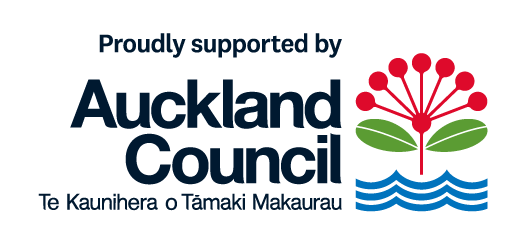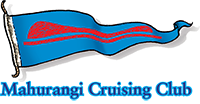On the coastal trail to the Mahurangi Regatta
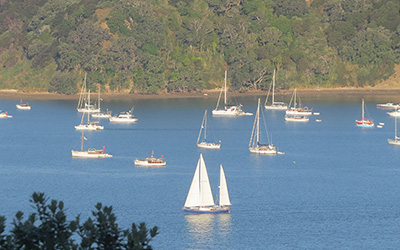
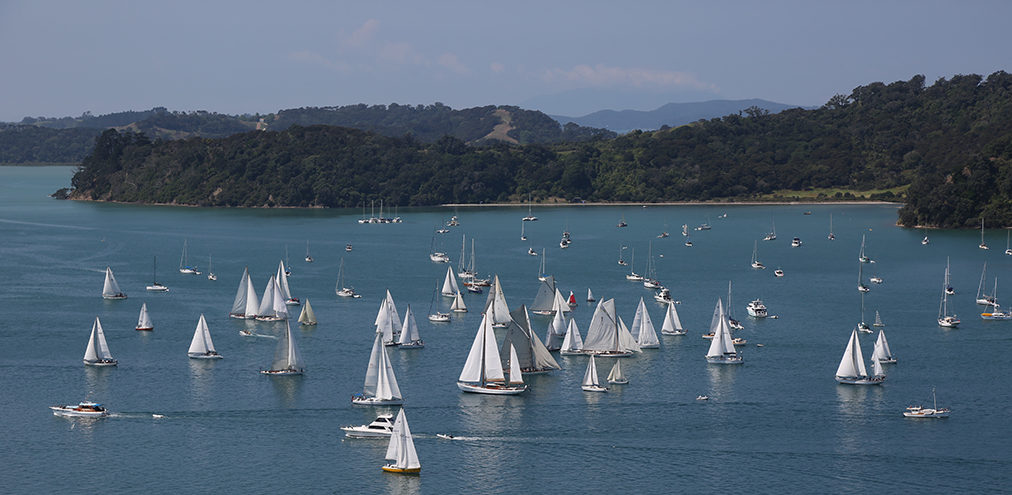
Settling for Second: Second only to arriving just after dark the night before, and waking up there on the day of the Mahurangi Regatta, will be arriving after less than hour’s walk from Waiwera, having just hopped off a metropolitan bus, travelling light to glamp the night away within view of the action, and the sophisticated strains of the West City Jazz Orchestra, carrying across the harbour on the ambient summer evening zephyr. image Bryce Taylor
For 45 years, the Mahurangi coastline between Waiwera and Ōpahi has been in public ownership begging to host a nine-kilometre coastal trail, linking 900-hectares of regional parkland.
But while the potential of the trail has existed since the 1973 public acquisition of coastal Te Muri, it wasn’t until 12 months ago that its future became official. Trail design is now underway with the goal of obtain planning and consenting approval in time for the launch—with major sources of funding pre-approved—of a surgically targeted crowd-funding campaign at the 2019 Mahurangi Regatta. The current goal is to open the Mahurangi Coastal Trail for the summer of 2019–2020, beautifully setting the scene for the 50-year Te Muri celebrations.
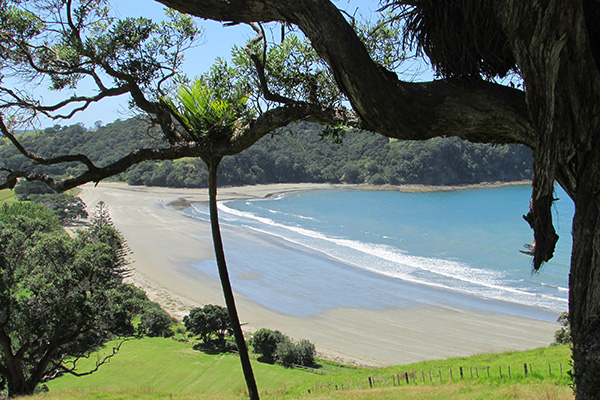
Splendid Isolation: Although its beach is almost as long as Wenderholm’s, Te Muri is, in many respects, a miniature of its big sister next door. Te Muri Estuary, however, sweet as it is, is not nearly as buxom as that of the Pūhoi, and boardwalk and a small bridge—well upstream where it will be screened by mangroves—is all that is required to provide all-tide access. And although the Mahurangi Coastal Trail will bring many more visitors, the sense of splendid isolation will be much more comprehensively protected than had a car park for thousands of cars been created behind the beach, which until a year ago, was the official, default intention. image Chris Eddy
In 2011, Te Araroa, the national walkway, opened after a 36-year gestation. Although it shares nearly three kilometres of coastline with the Mahurangi Coastal Trail, it could share more, and be provided with the terrestrial link to Pūhoi that is currently missing. This is not unusual for Te Araroa, because despite being officially open for seven years, still involves significant stretches of, sometimes distressing, hazardous, road-shoulder walking. those with sufficient discretionary budget who coincide with the tidal flow in their favour have the sublime option of canoeing between Pūhoi and Wenderholm. But those who elect to struggle along State Highway 17, invariably look to be having a miserable time of it:
…it can be walked however is on the side of SH1 which can be very busy. We recommend kayaking as it is much safer than walking these busy roads.
Extreme care should be taken, and if you have a hi-viz vest and/or pack cover we recommend wearing it.
The year before the national walkway opened, the 383-hectare Peter Schischka farm was added to Auckland’s regional park estate, potentially providing a walkable scenic ridge farm road connecting to little-used Hungry Creek Road, and thence to Pūhoi. With Auckland Council now convinced of the need to prioritise this route for walking, the planets are finally in alignment for the coastal trail to be developed, responsibility for which has been assumed by the Mahurangi Coastal Trail Trust, established in 2015.
The principal physical challenge to walking the coastline between Waiwera the Mahurangi Harbour is the Pūhoi River. Its estuary, at low tide and in places, can be waded, through water barely knee-deep. At high tide, however, particularly at the river mouth, the four-knot current would test even an Olympic swimmer. Several footbridge options were explored by the coastal trail trust, but even the ‘elegant option’ tracing a sinuous route across the estuary, at nearly 300 metres in length, was, on reflection, likely to fail to meet the regulatory landscape and visual impact protections, the highest which the estuary enjoys.
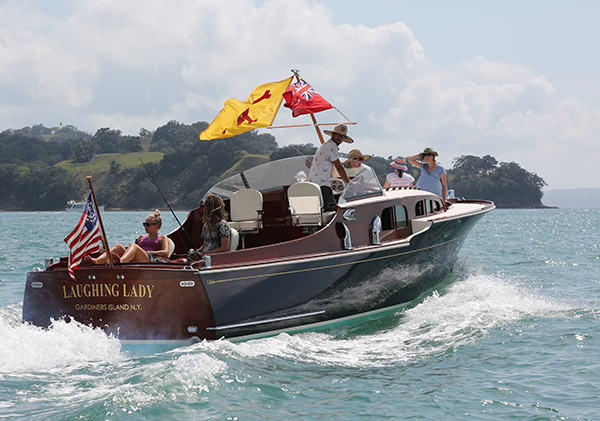
Walking into Glamour: A beguiling aspect of the Mahurangi Regatta is how its regional park setting results in people stumbling upon the event, and instantly being embraced by it; kids unhesitatingly wading into the beach events. Building a high quality coastal trail, in a stunning coastal landscape, handy to the metropolis, will help elevate awareness that walking is a first-class way to arrive—in this scenario perhaps, to join friends who endured a bumpy, coastal trip to the regatta. The next phase of the Mahurangi Coastal Trail involves a cross-harbour ferry, to allow walkers to access the Mahurangi Peninsula backdrop to this image. image Bryce Taylor
Heroically, rather than say shan’t, which it so safely could have, the Auckland Council officers’ report on the management plan variation for Te Muri suggested:
Another possibility is the provision of a chain cable ferry. Such ferries are common throughout Europe. This … could become a unique attraction in itself, without the need for large infrastructure crossing the river.
Design of a cable ferry to operate at the Pūhoi River Mouth is now earnestly underway. The operation won’t be cheap, but then nor would have been a footbridge, with the same officers’ report warning of a possible $10–20 million cost. What it will be is fossil-fuel-free, and significantly, but possibly not entirely, tidal-river powered. The upside of a ferry, as opposed to a bridge, is the expectation that a charge would be involved. The trust believes that this can be kept nominal, by manning the vessel with certificated, volunteer crew—currently volunteers fight for the privilege of working at Wenderholm, and the roles couldn’t come sexier than skippering a Pūhoi River Mouth ferry.
The local economic impact of the Mahurangi Coastal Trail, although impossible to forecast definitively, will be significant. Fifty thousand people per year walk Queen Charlotte Track, in the Marlborough Sounds; Waiwera, on the map as a tourist destination for 170 years, is the northern metropolitan transport terminus of New Zealand’s largest city. The coastal trail will link Waiwera with Pūhoi and Mahurangi West, where boutique accommodation is beginning to reach critical mass.
The better part of 50 years may seem a forlornly long time for a coastal trail to materialise, but with the rapidly dawning realisation that fossil-fuel-free forms of recreation and tourism are essential if the splendid isolation of Aotearoa is to be sustainably enjoyed, the timing is profound.
Mahurangi Regatta supporters and collaborators
Auckland Council
Browns Bay Boating Club
Bucklands Beach Yacht Club
Classic Yacht Association
Corporate AV Services
Devonport Yacht Club
Ester Electrical – Scotts Landing prize-giving-and-dance lighting
Gulf Harbour Yacht Club
Mahurangi Action—principal organiser, revived regatta in 1977
Mahurangi Cruising Club—host club and sailing organiser
Mahurangi East Residents and Ratepayers Association—co-host of prize giving and dance
Mahurangi Oyster Farmers Association
Milford Cruising Club
Nautica Shipping & Logistics
New World Warkworth
Panmure Yacht and Boating Club
Pine Harbour Cruising Club
Prestige Loos
Richmond Yacht Club
Royal New Zealand Yacht Squadron
Sandspit Yacht Club
Teak Construction—principal regatta sponsor
Weiti Boating Club
West City Jazz Orchestra

